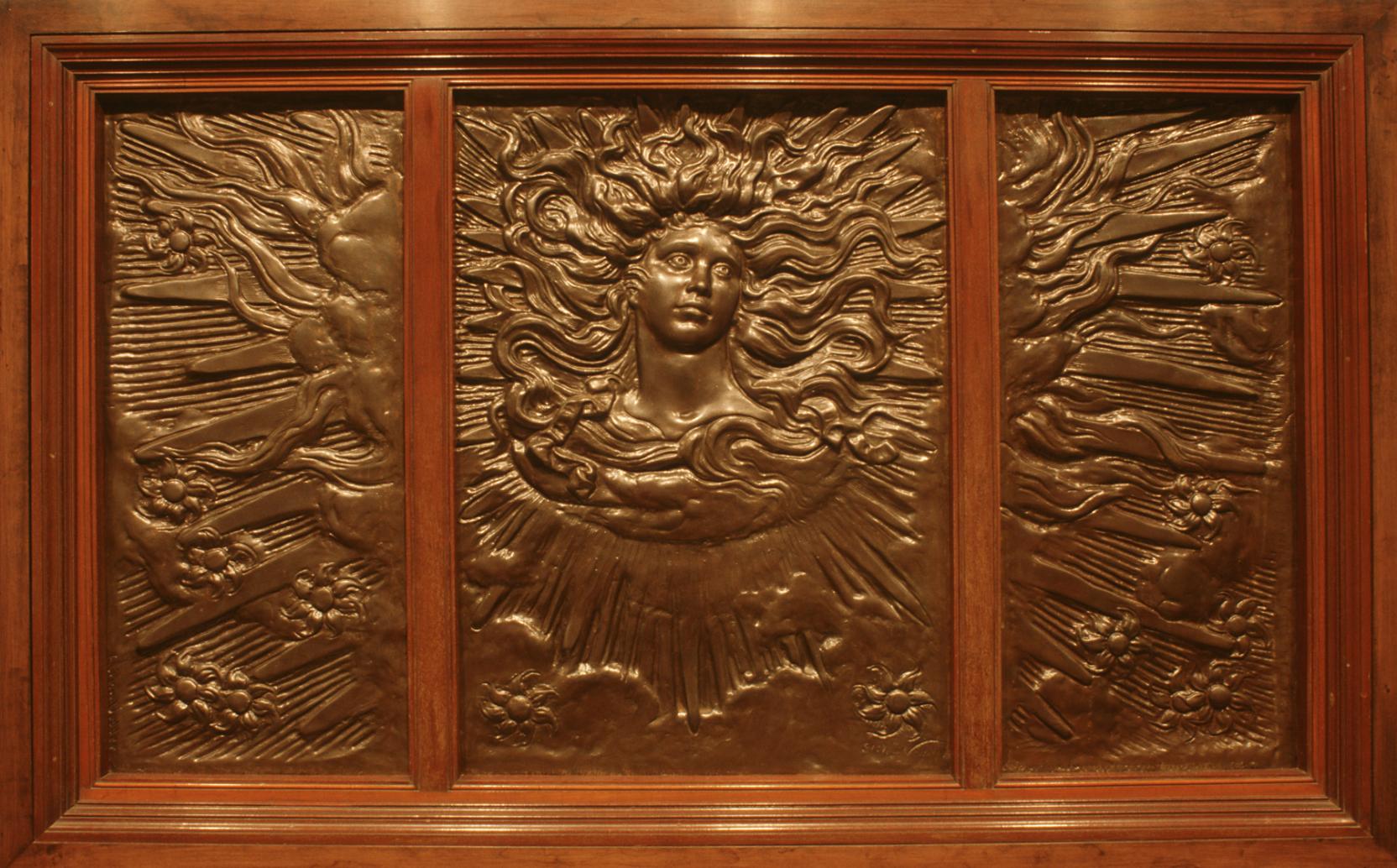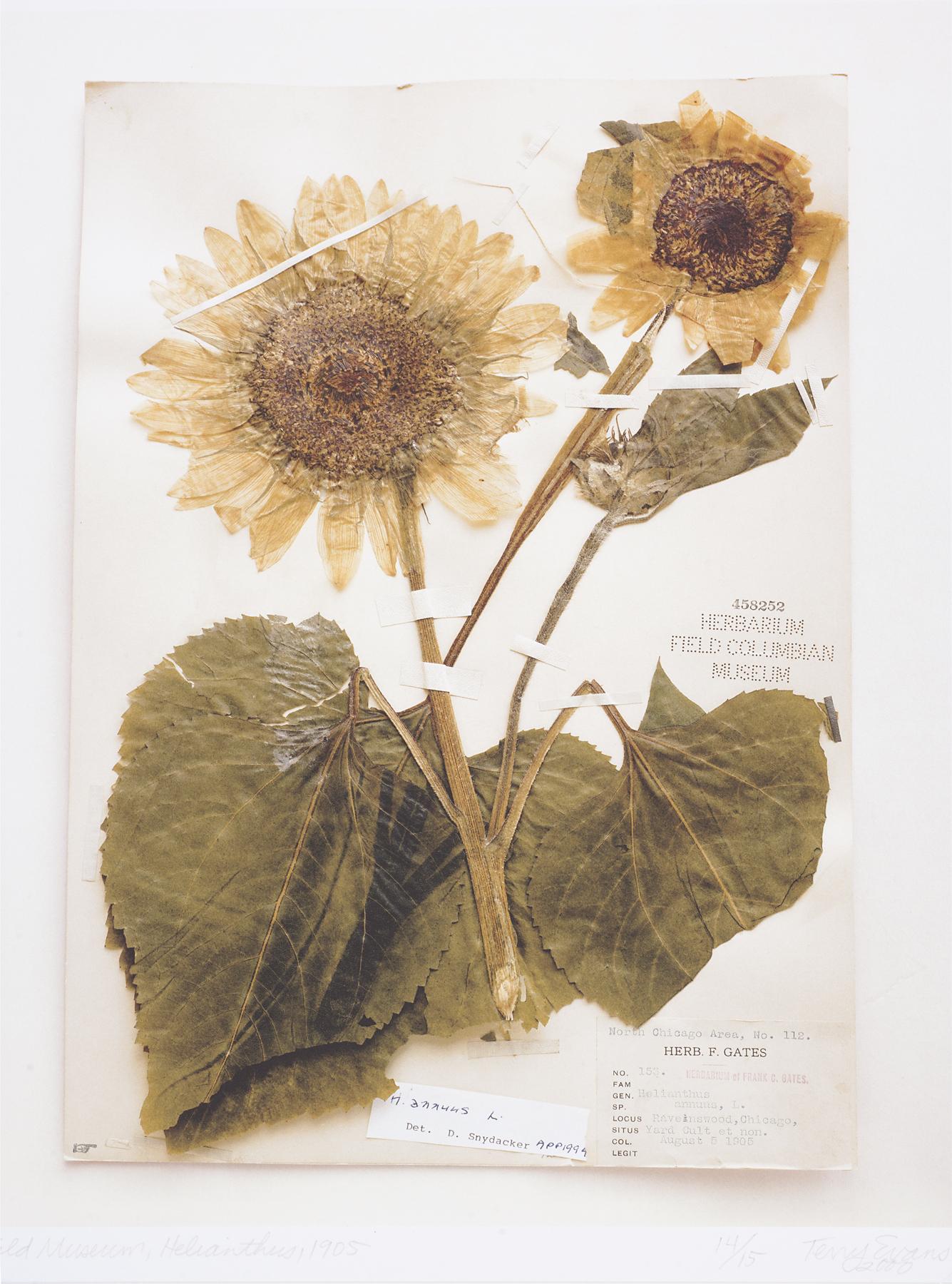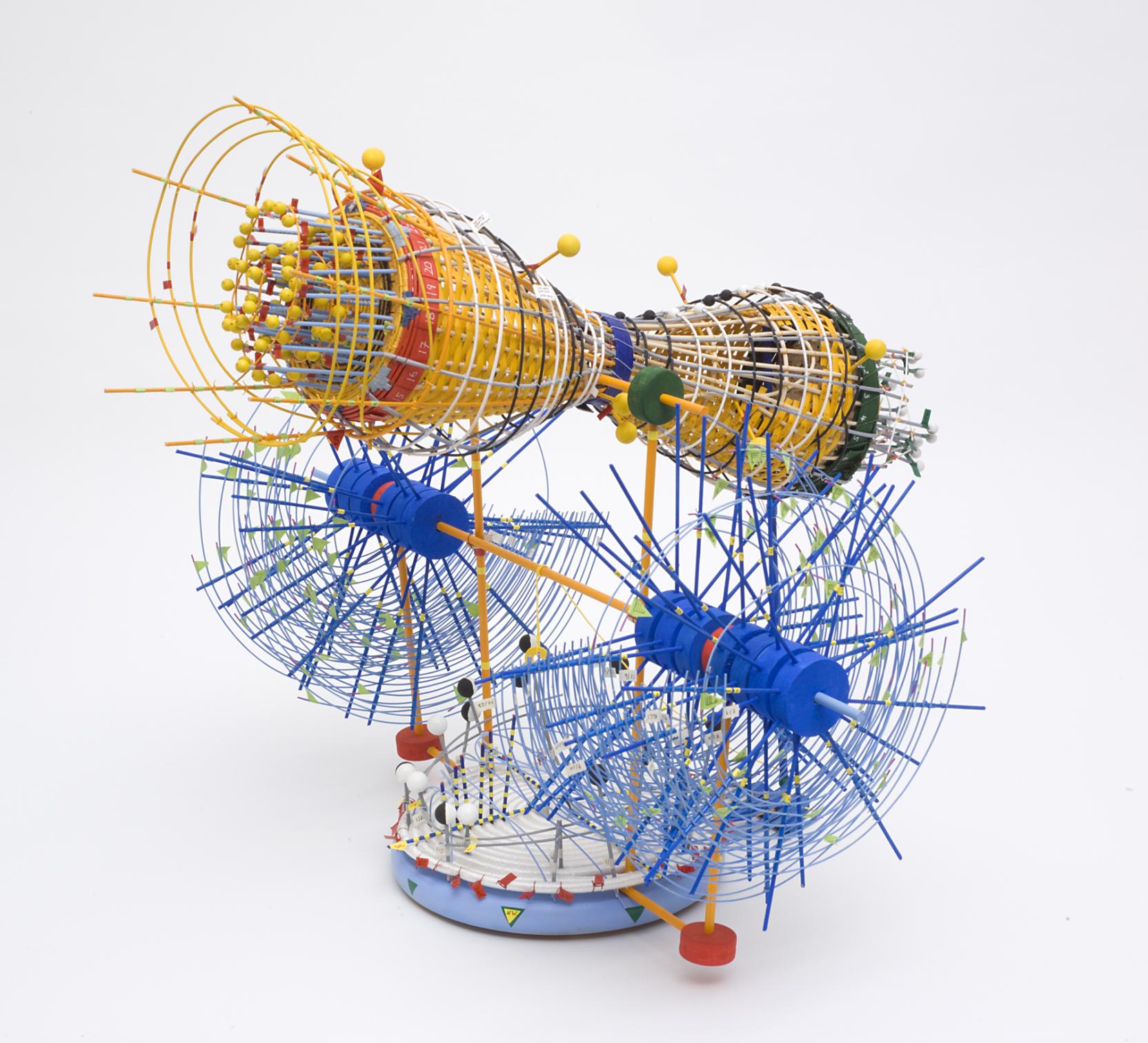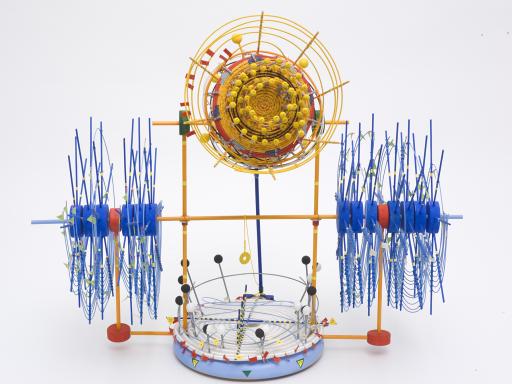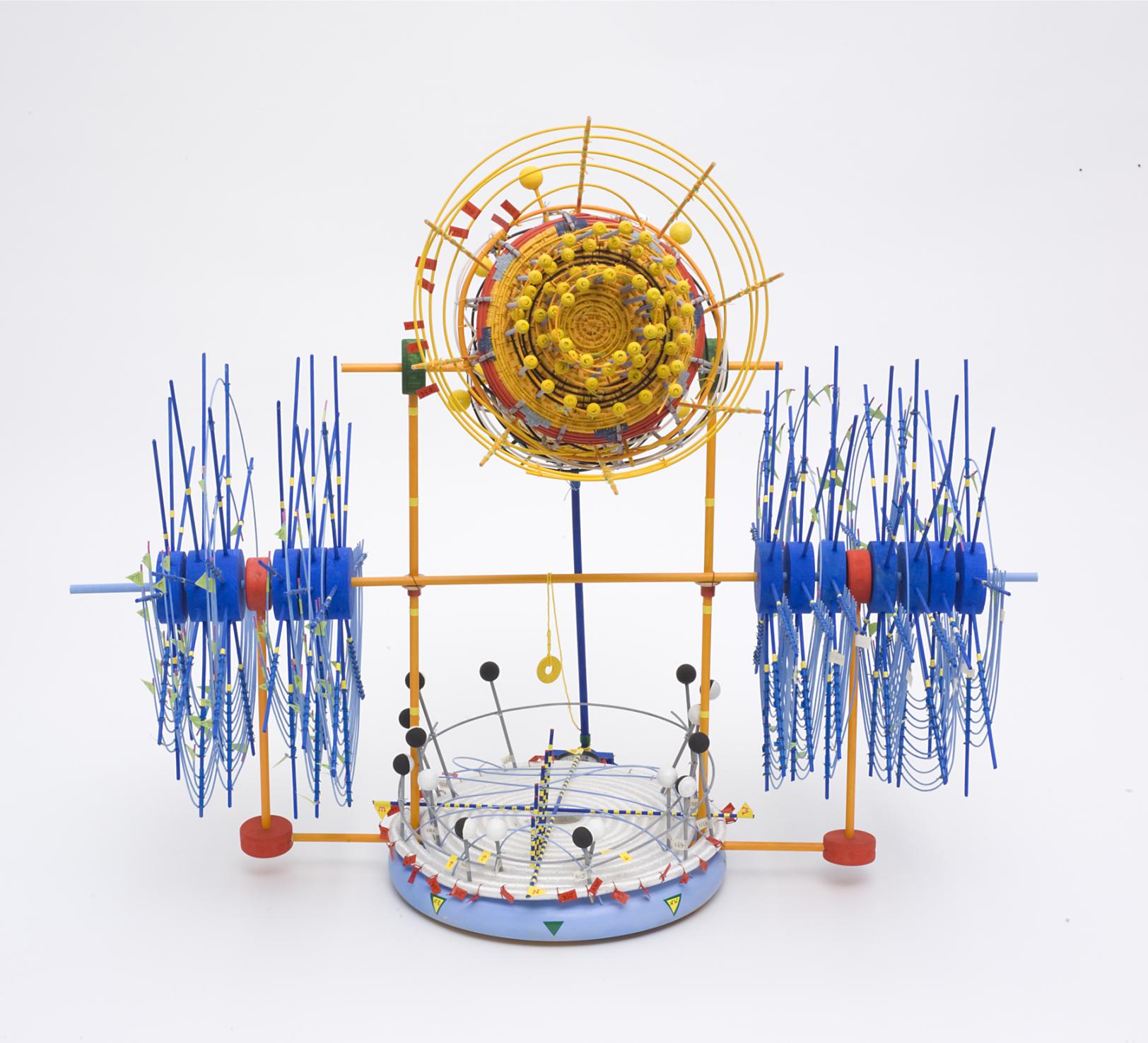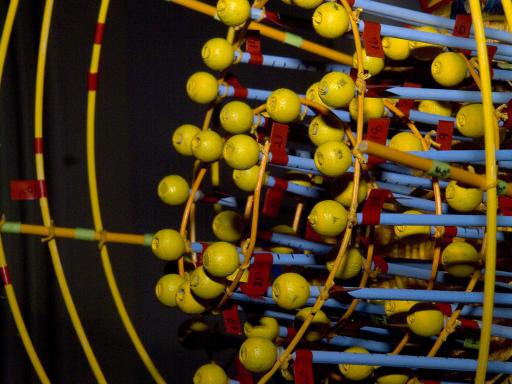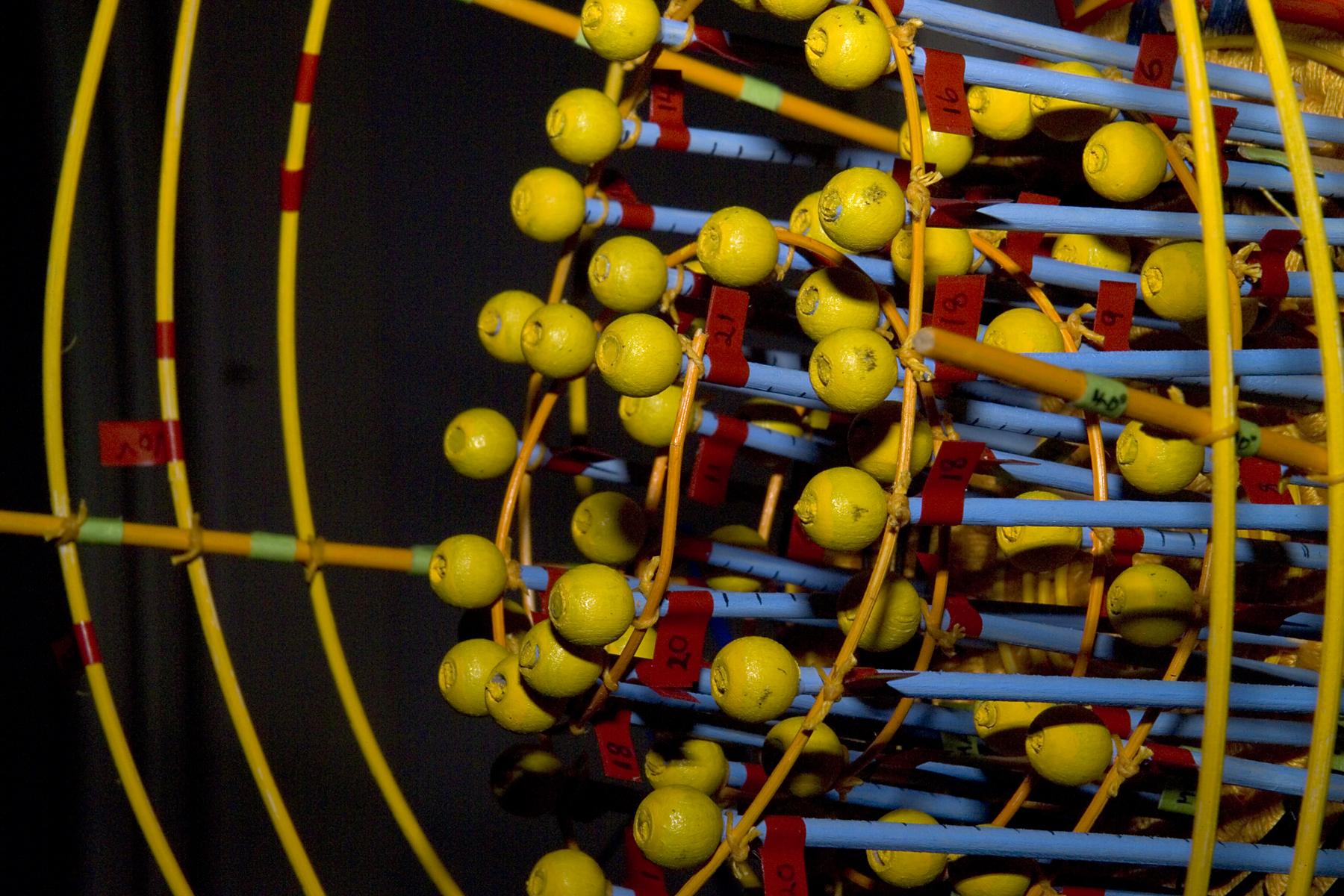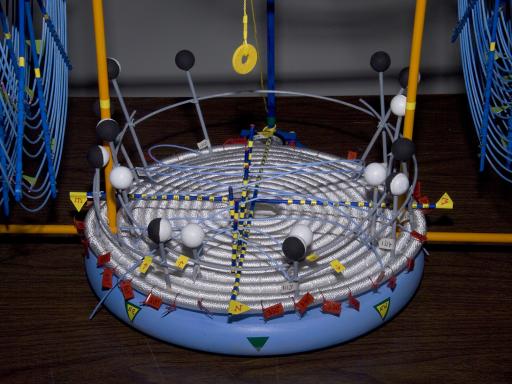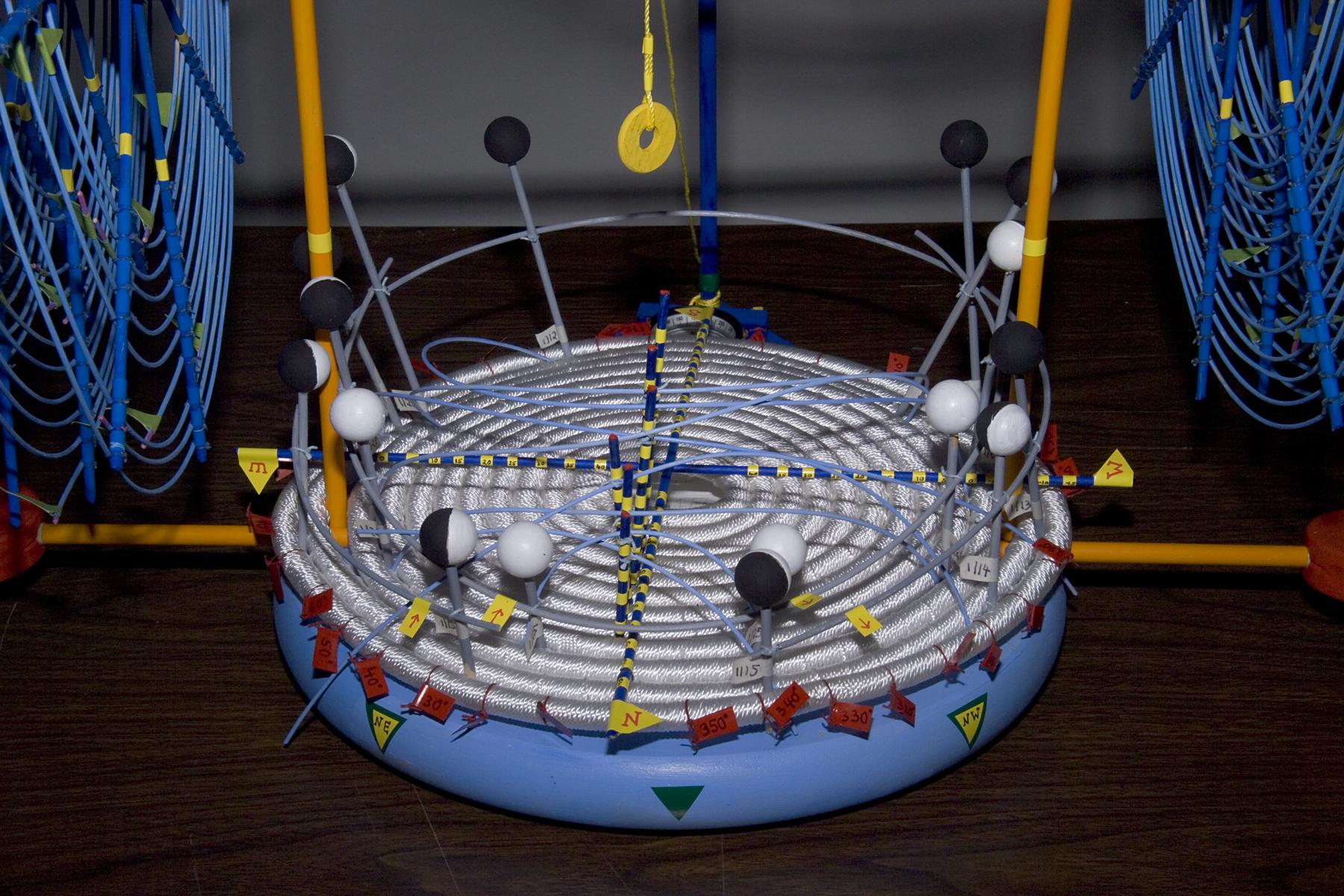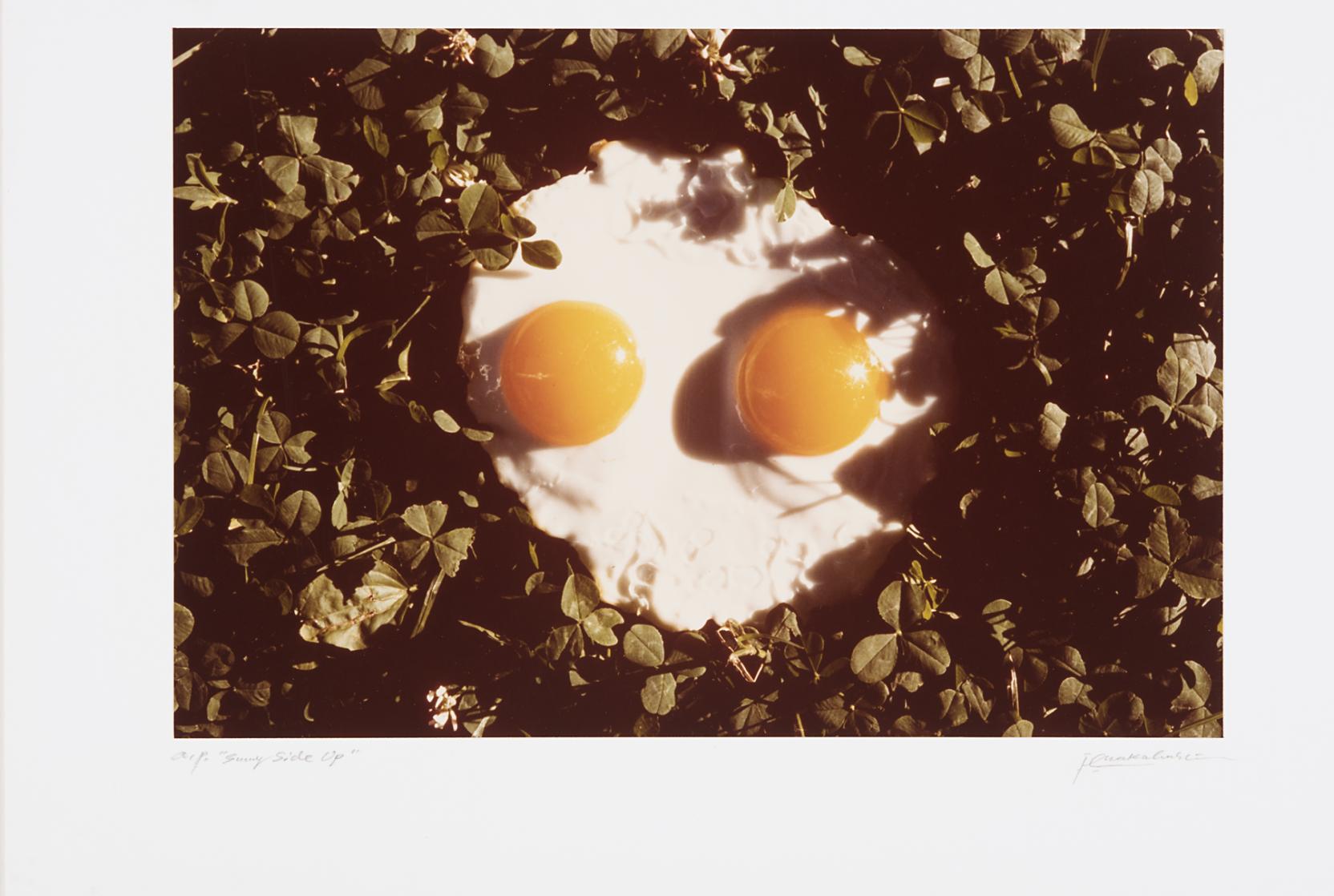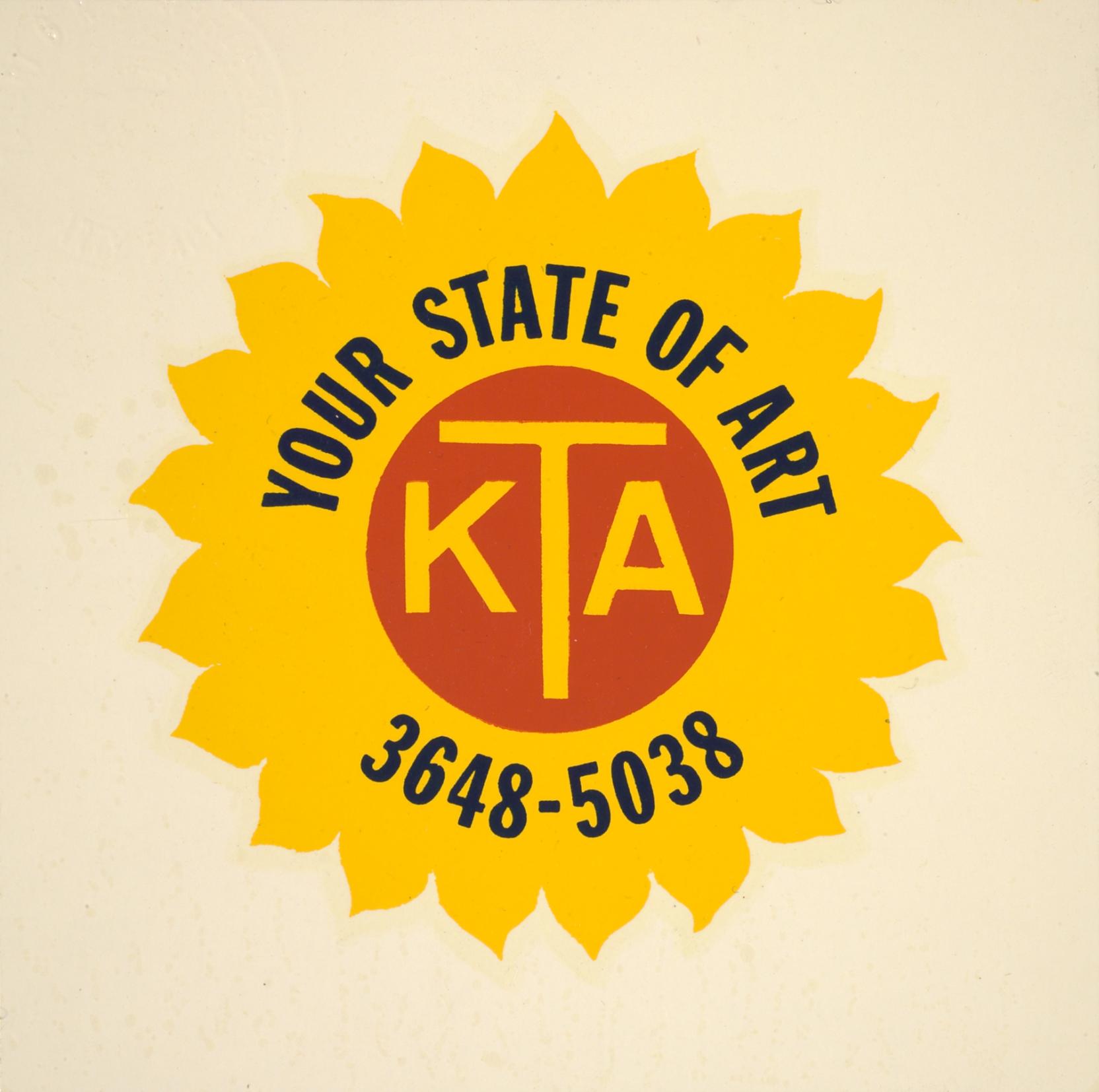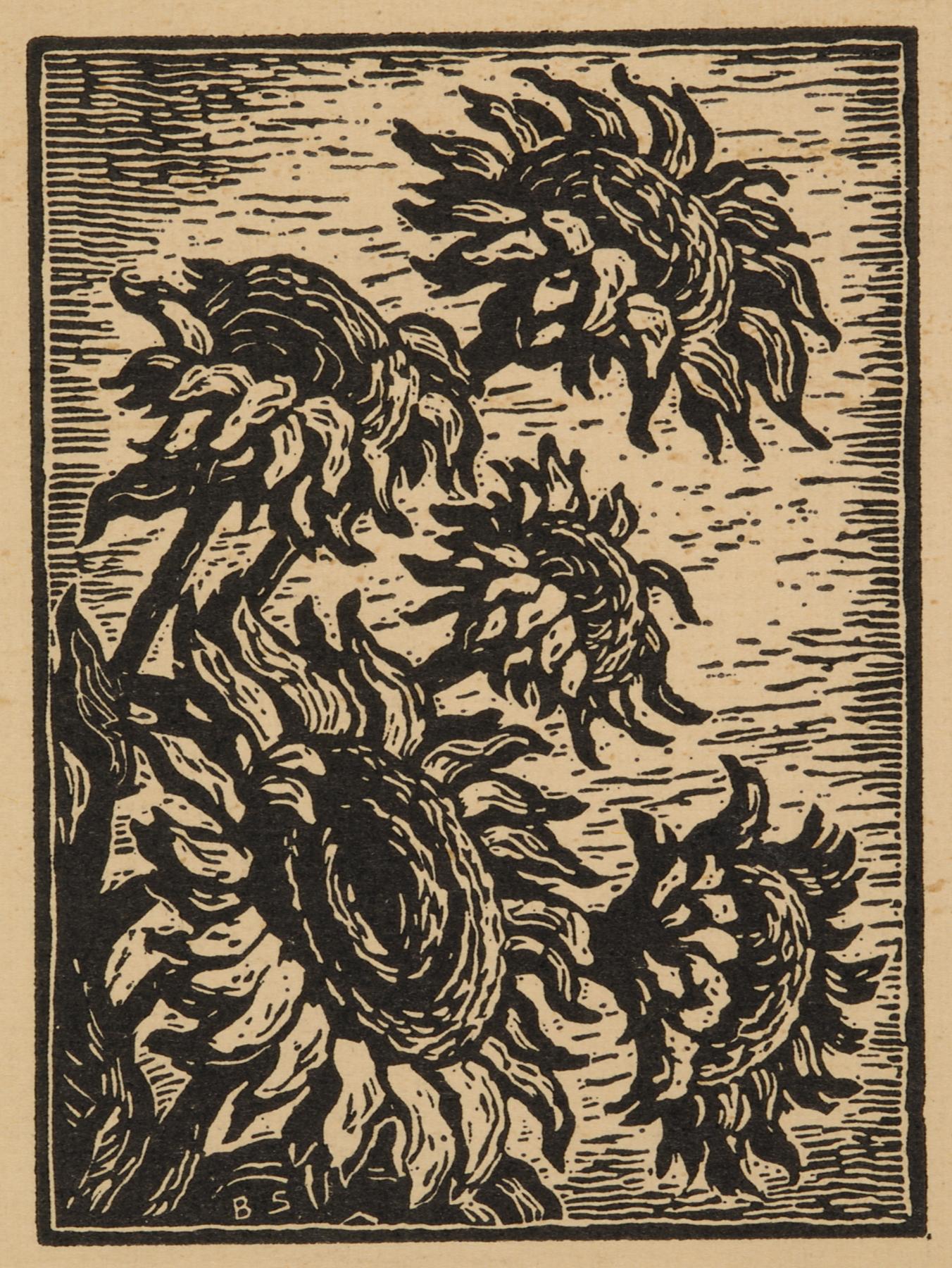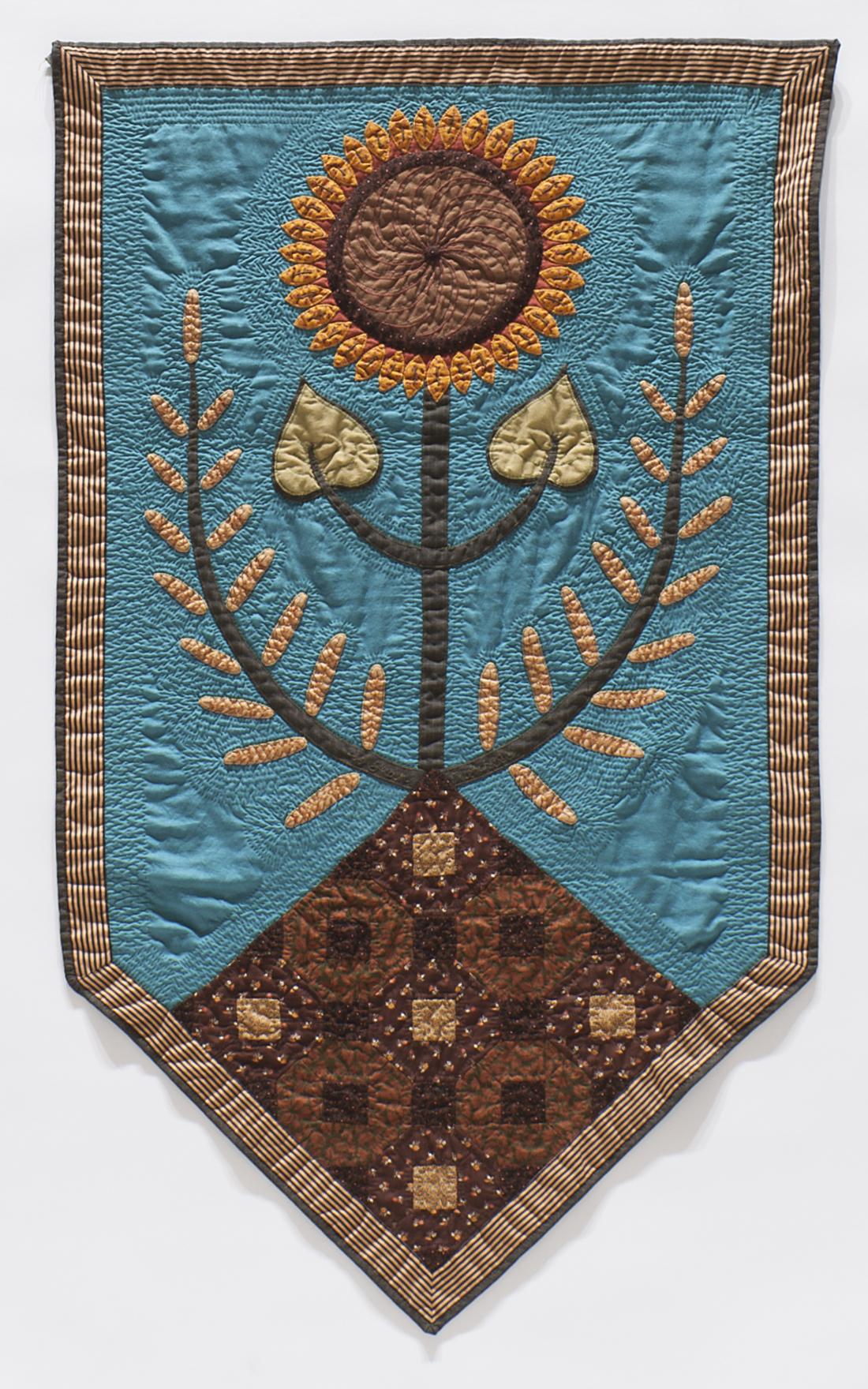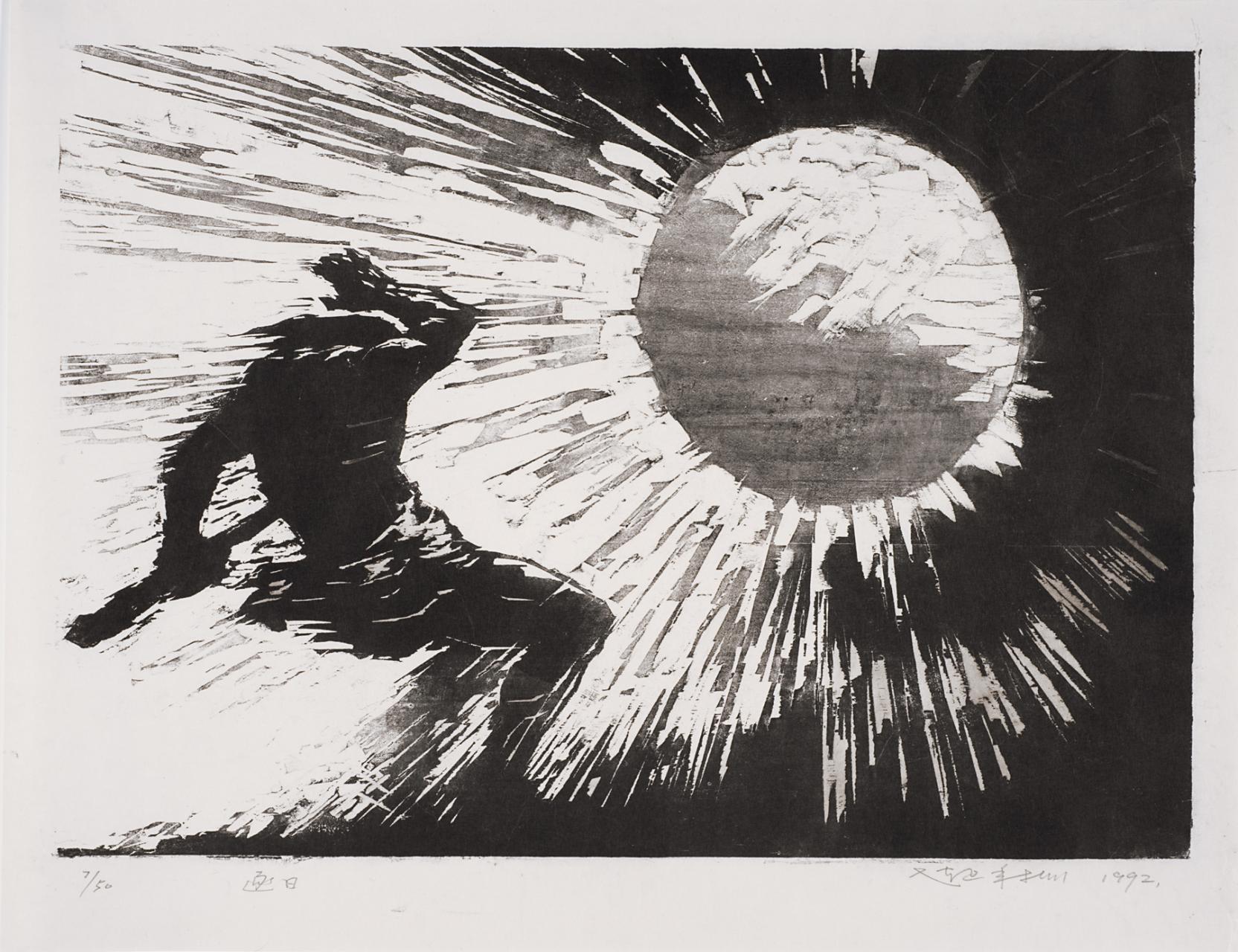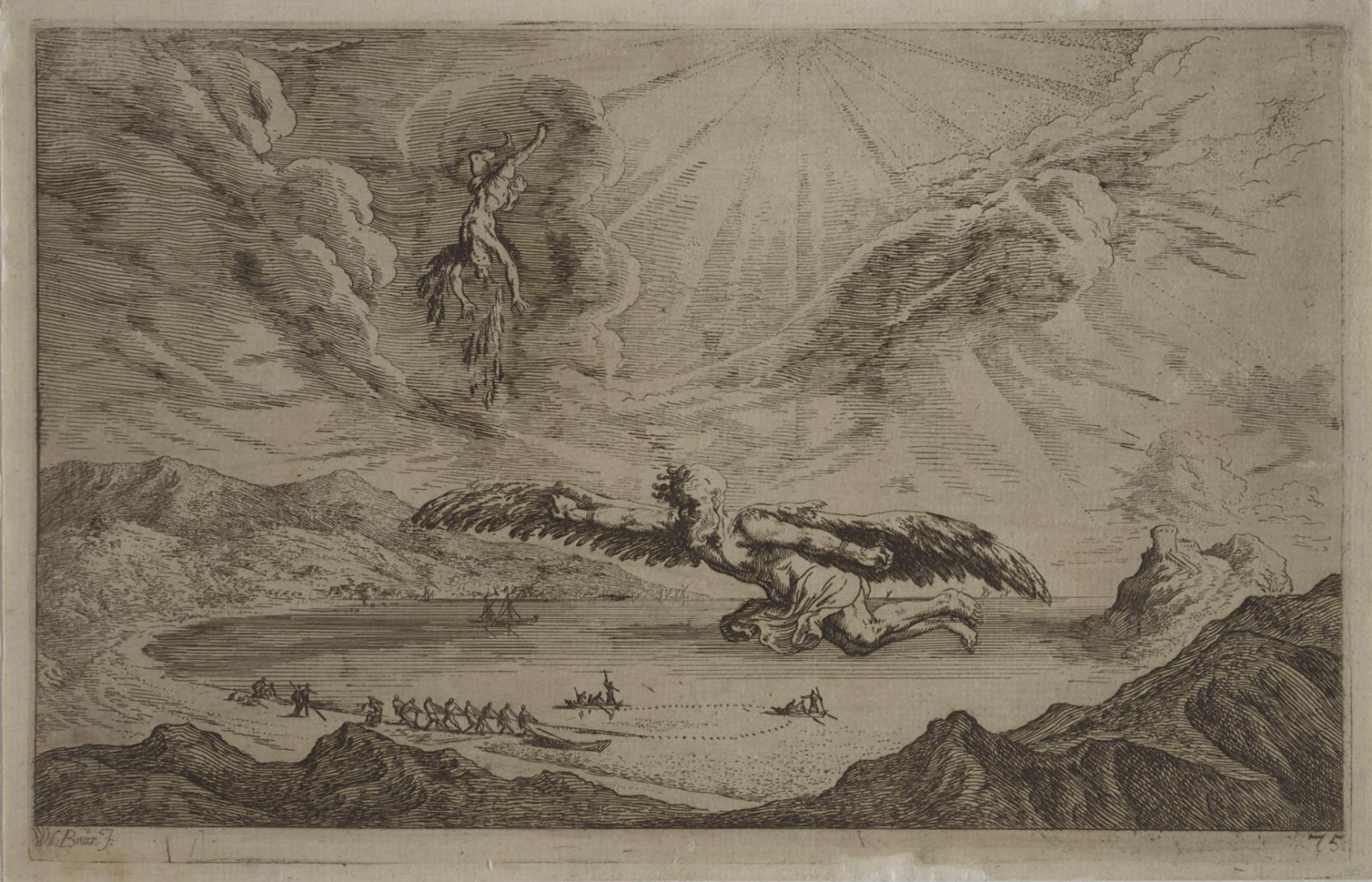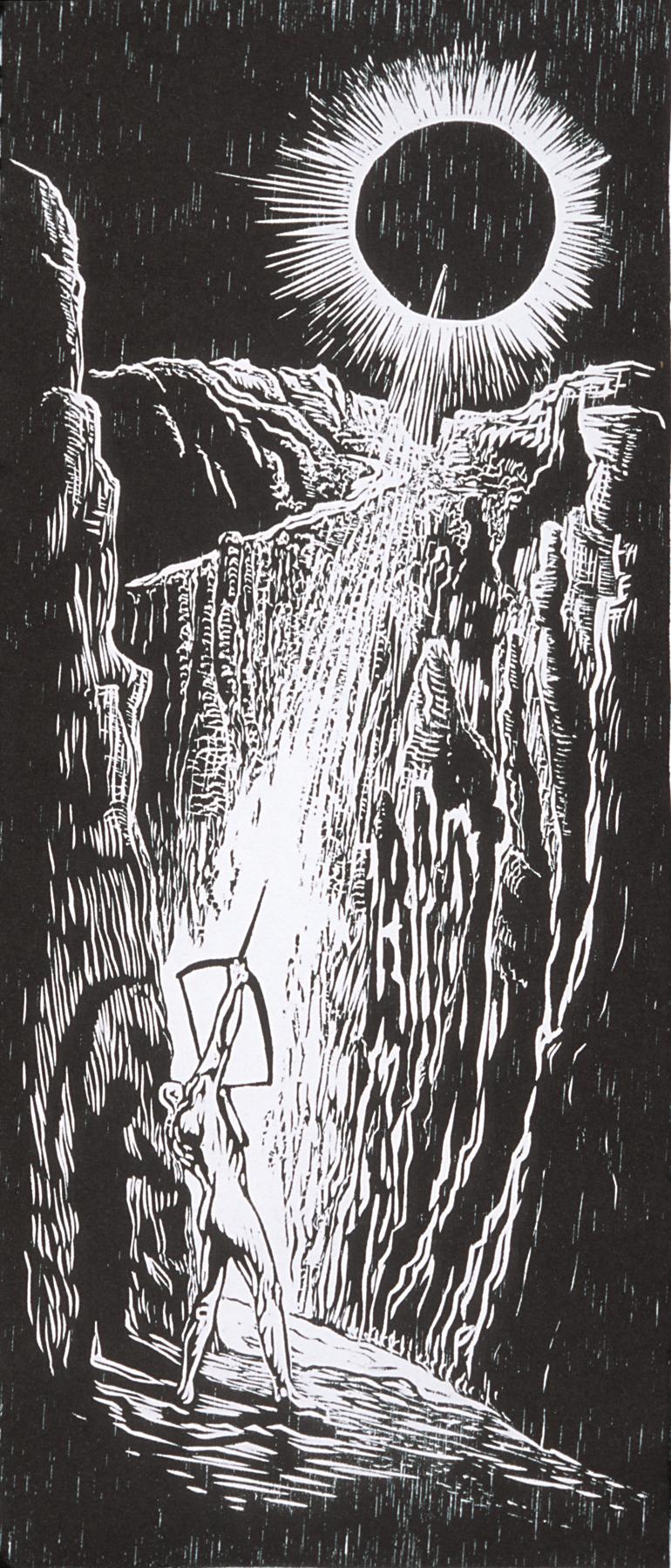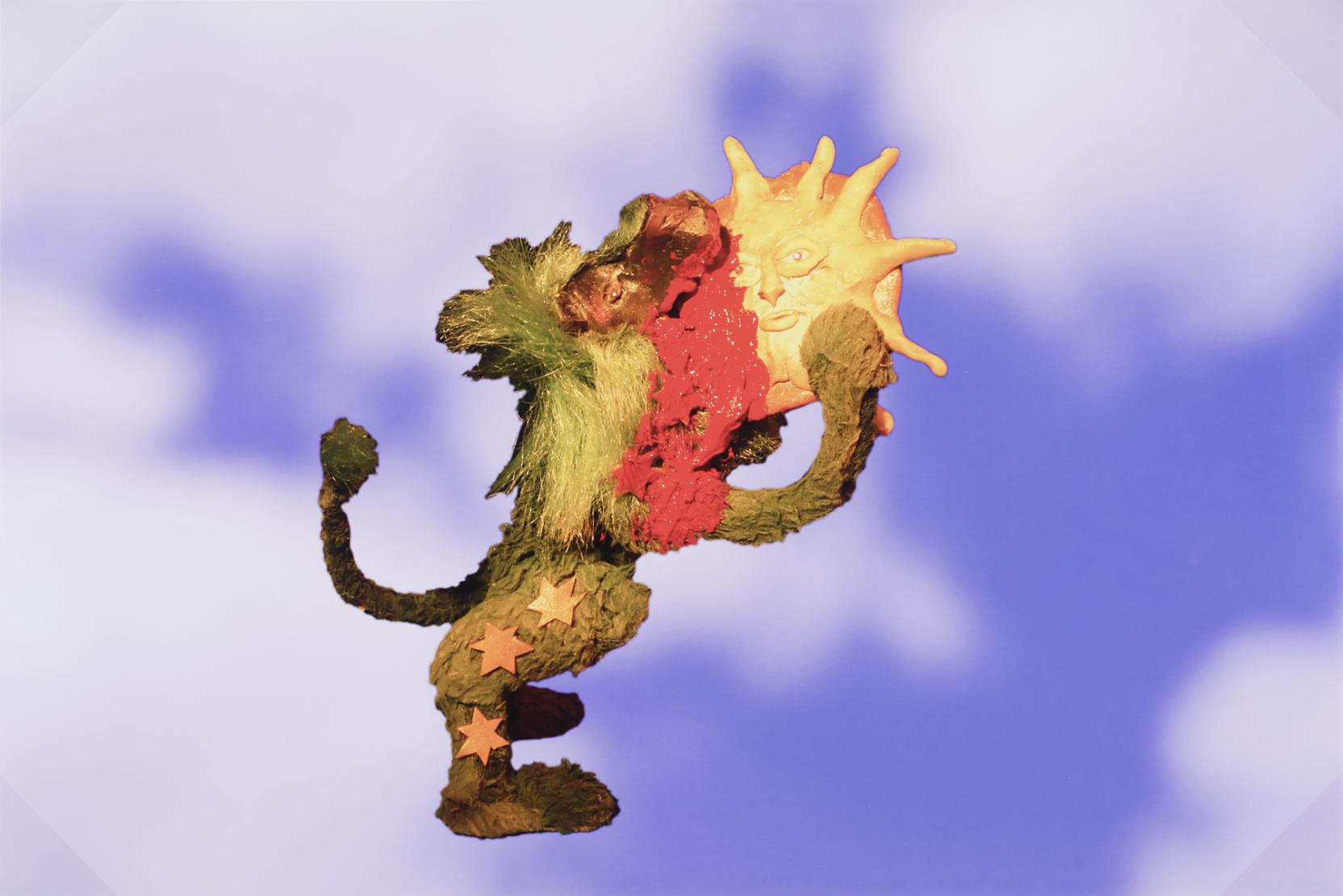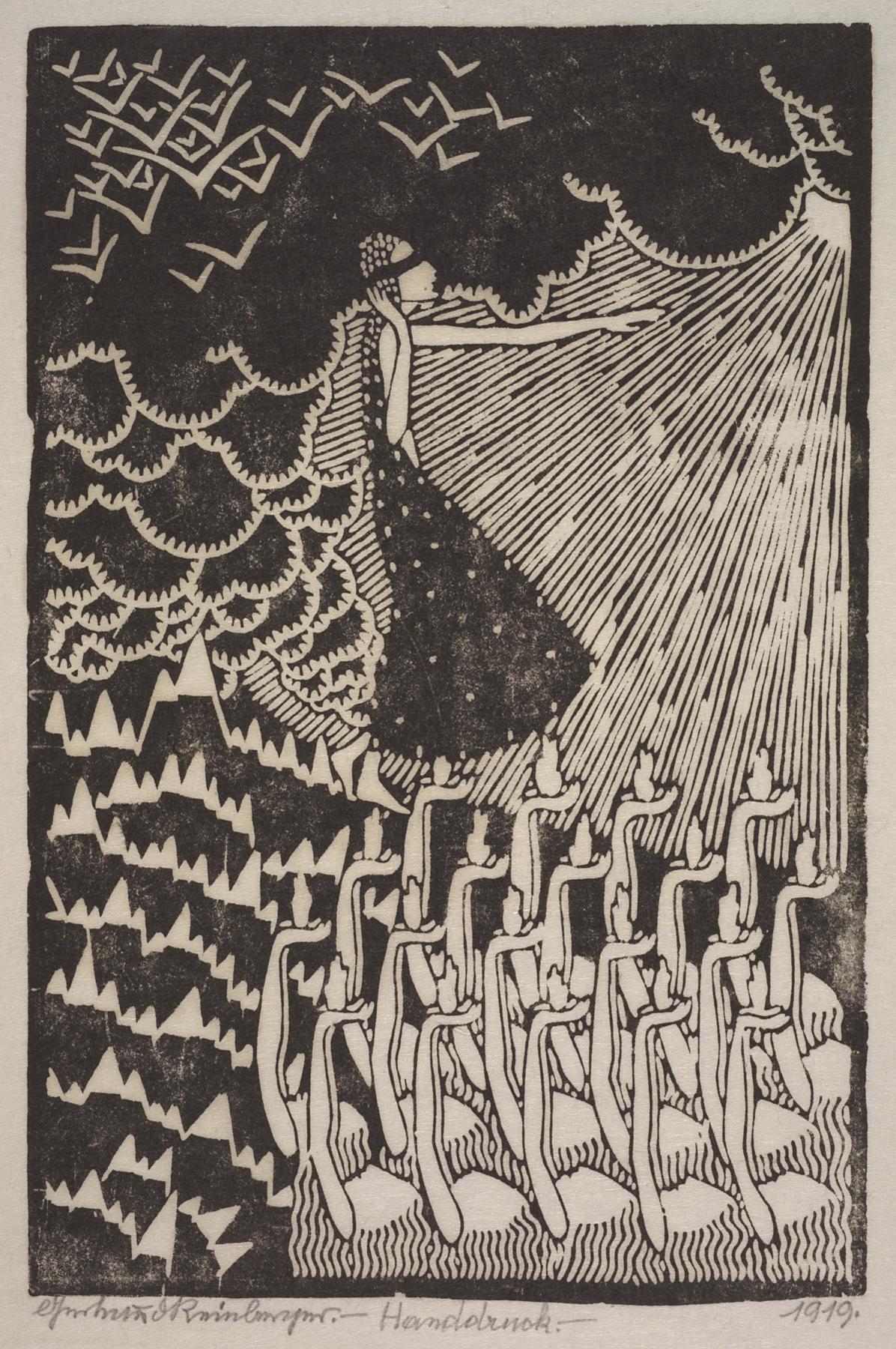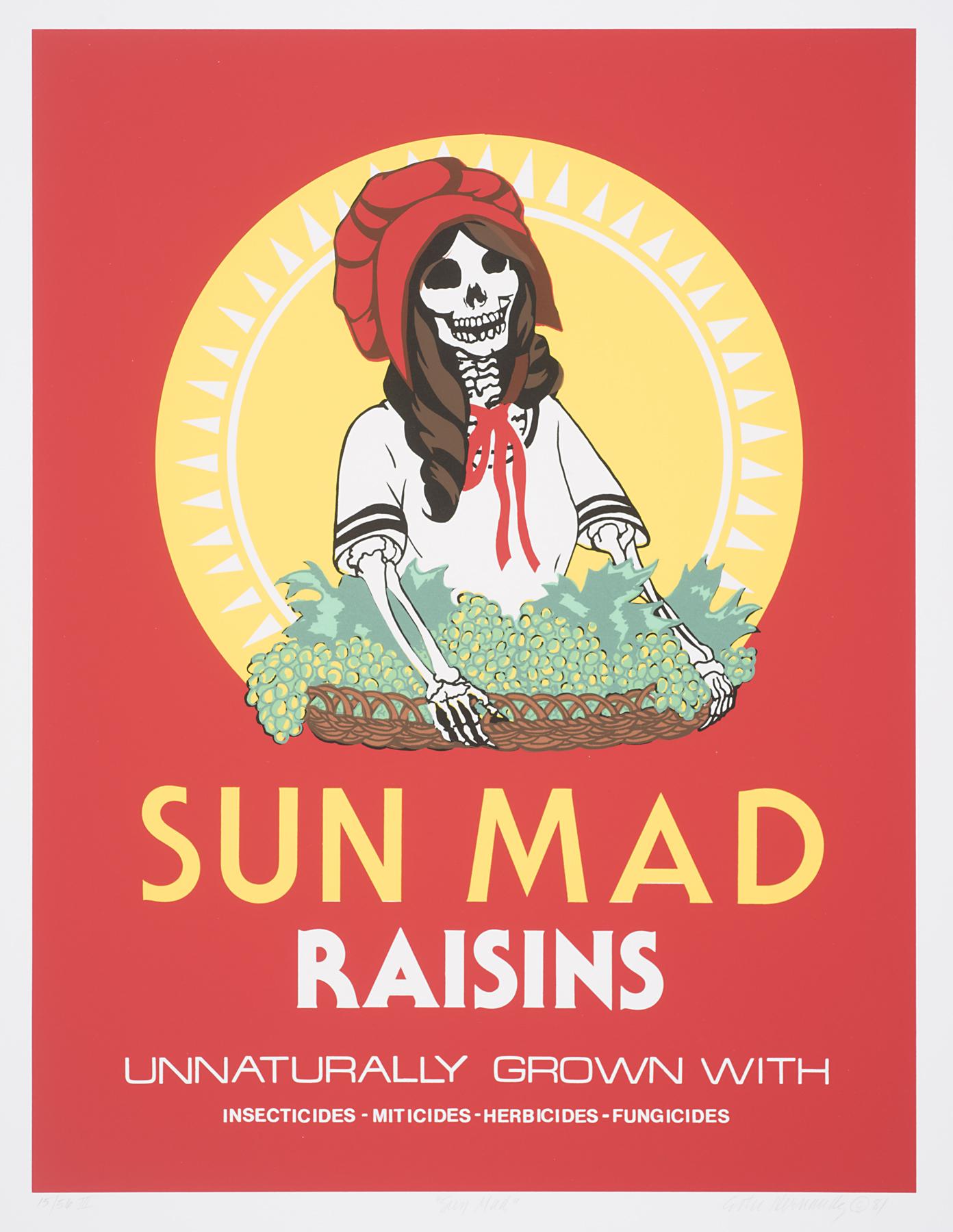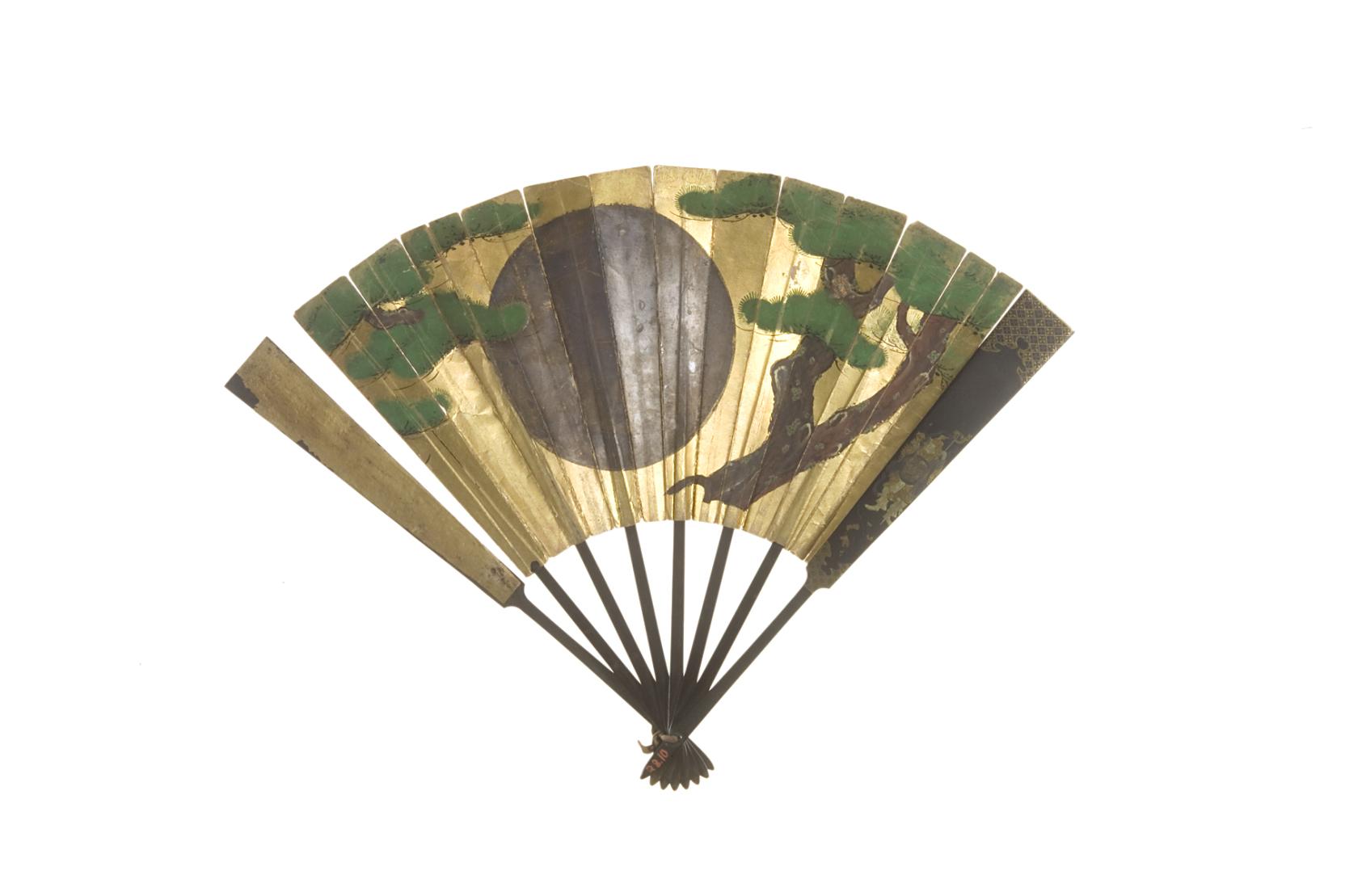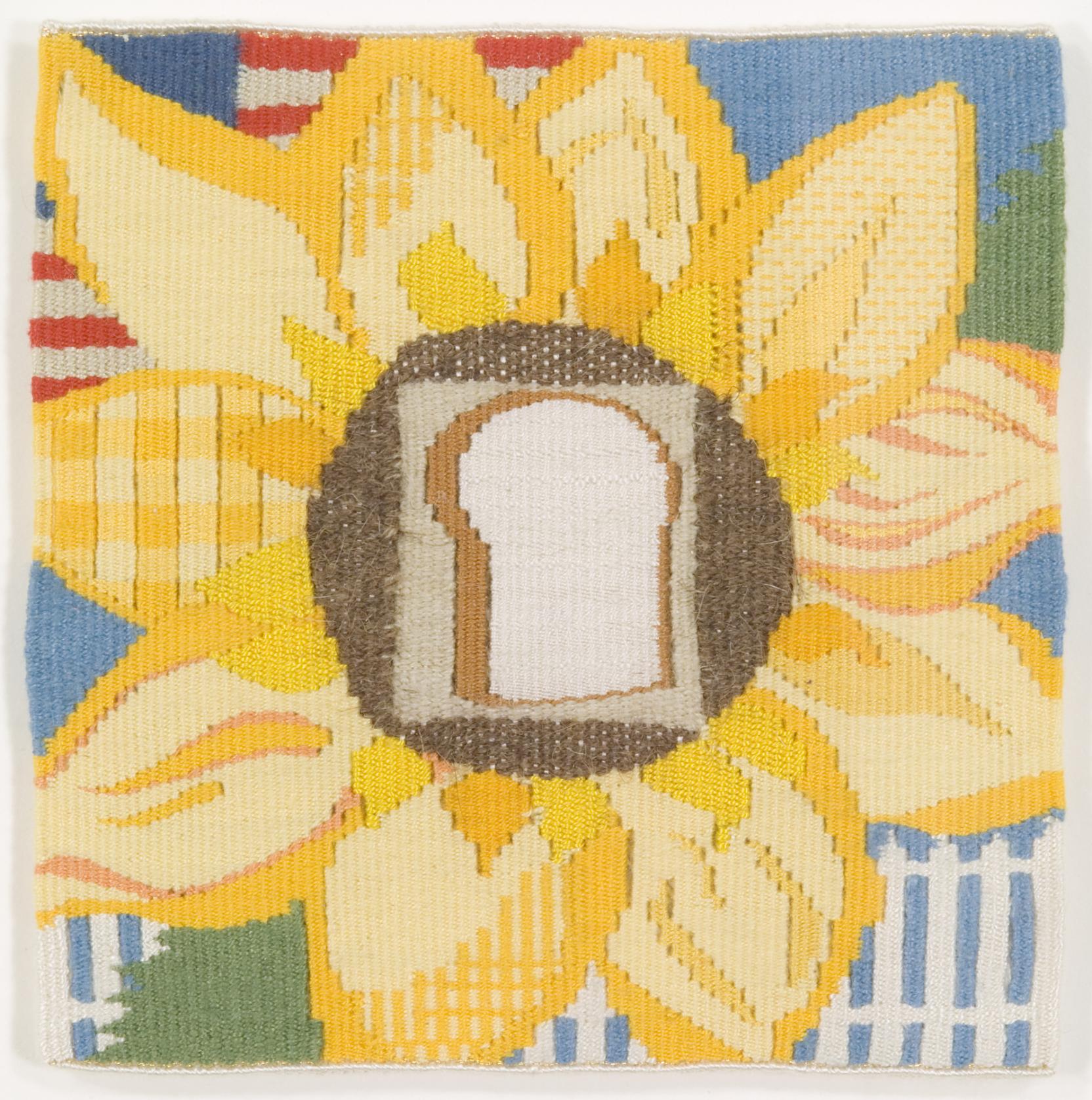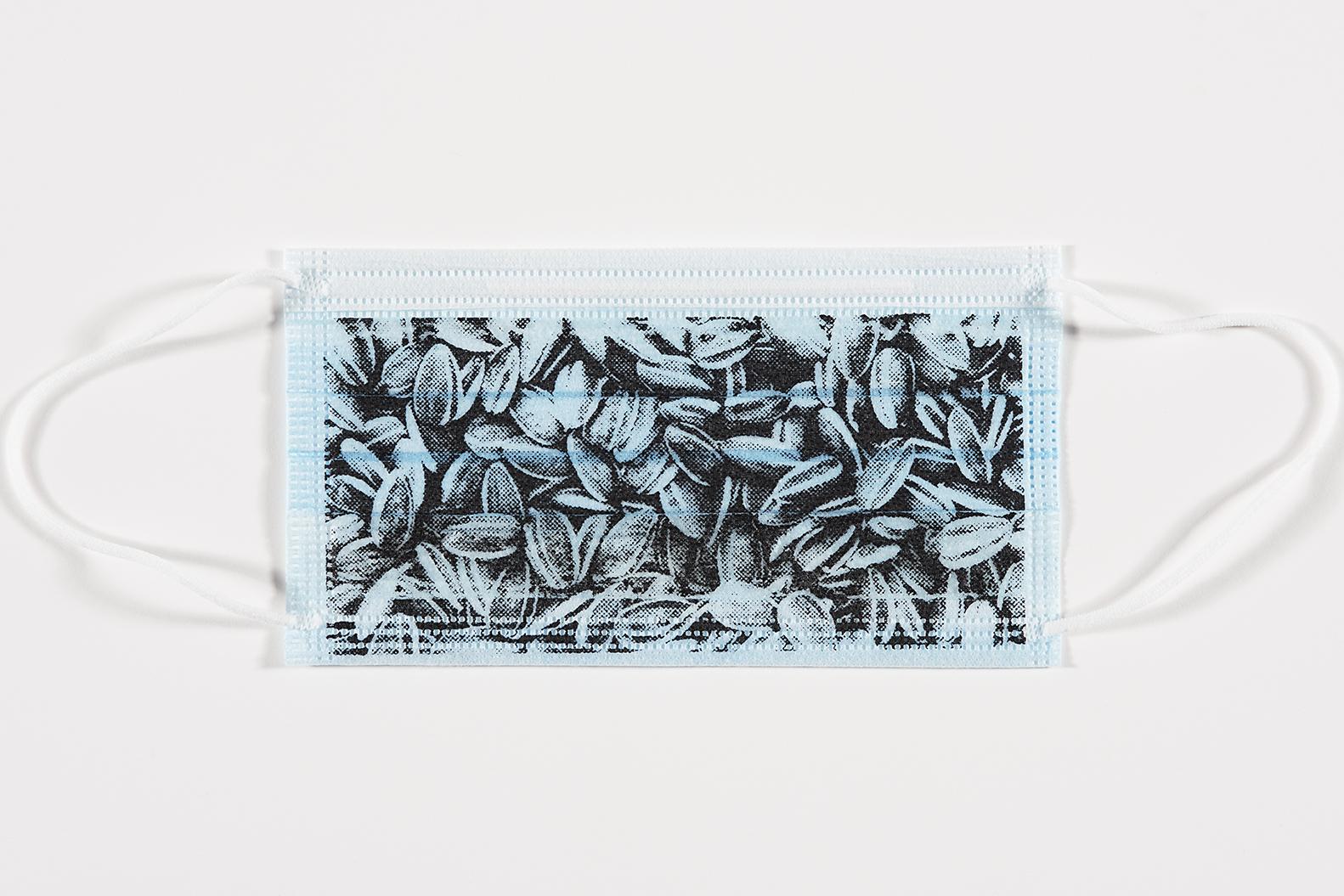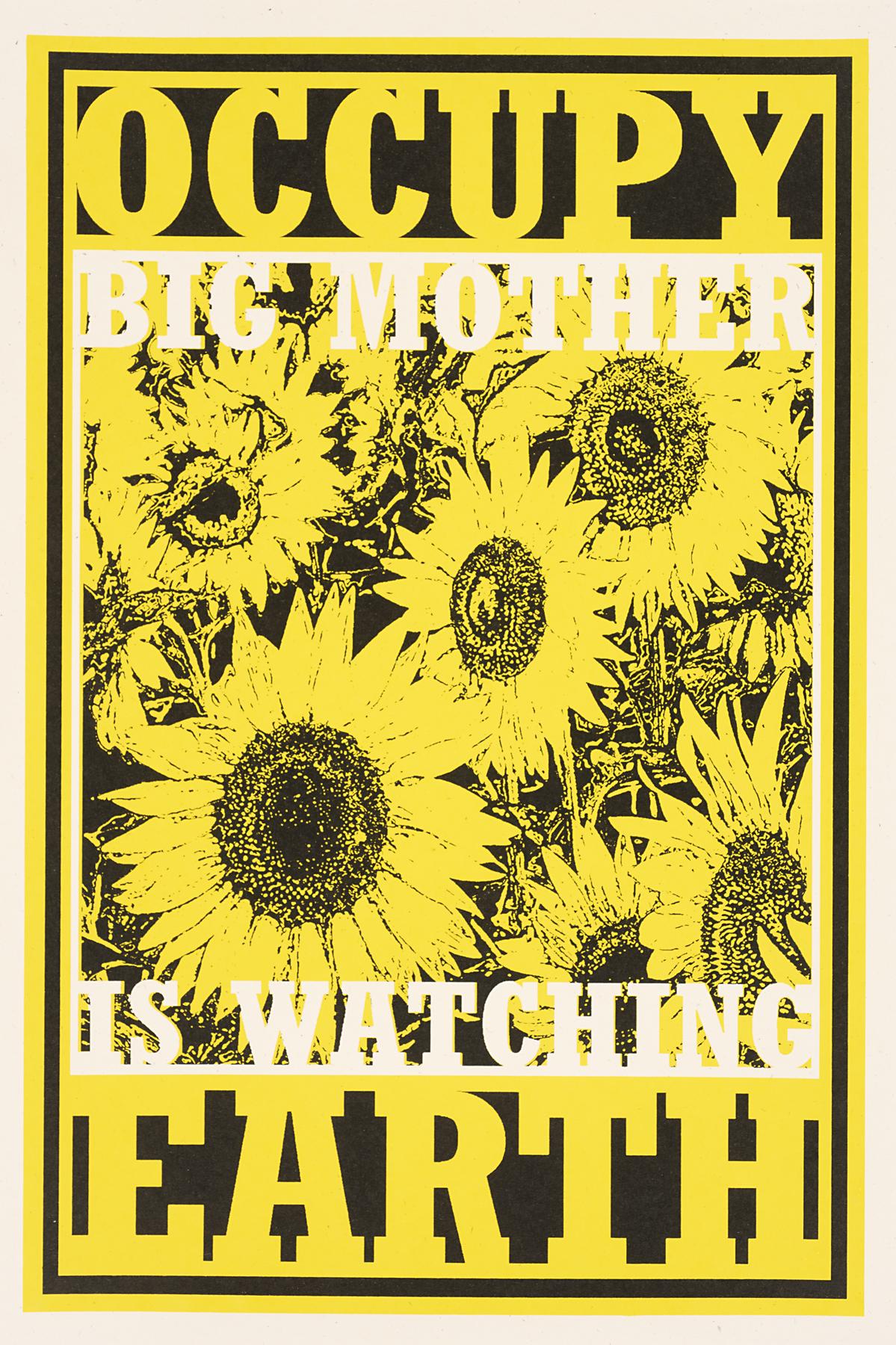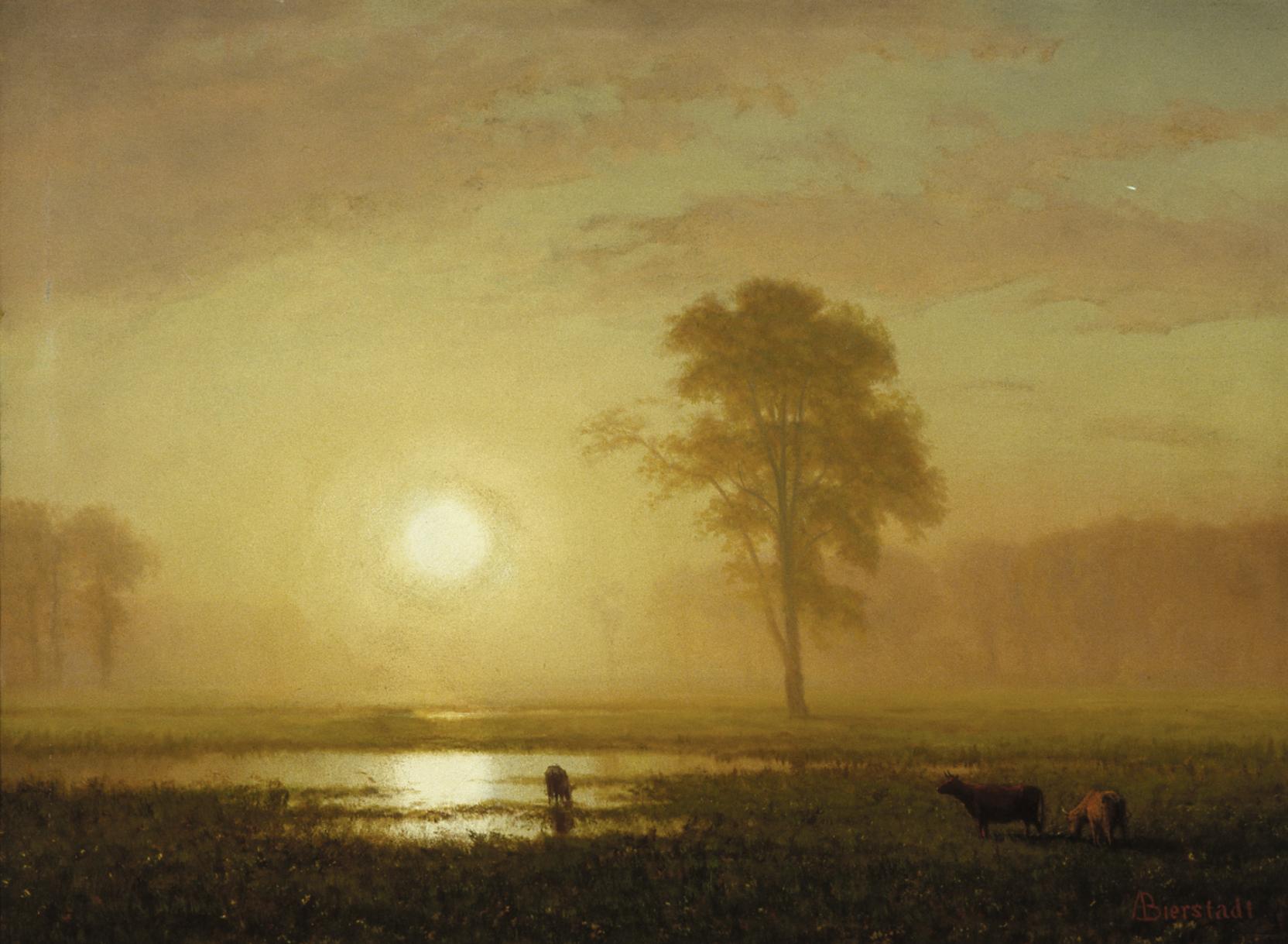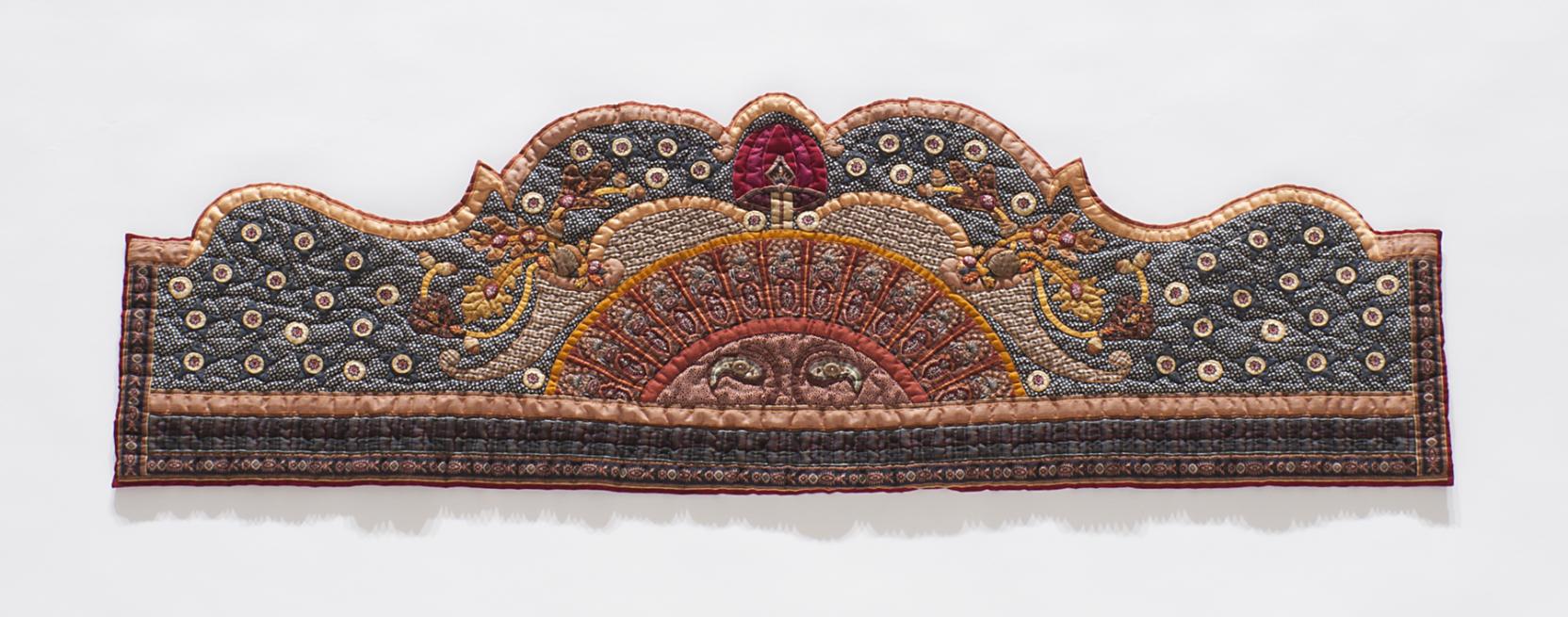Following the Sun

Following the Sun presents works from the Spencer Museum of Art’s collection that depict the sun and sunflowers (the state flower of Kansas) and captures their symbolic meanings. Inspired by heliotropism—the act of following the sun’s direction—the exhibition traces representations of the sun across various cultural and political contexts. The featured works span various media and four illuminating themes, demonstrating the enduring relevance of the subjects while showcasing artists’ creative interpretations of them.
Throughout time, the sun has signified life and positivity, affecting daily rituals, scientific research, and the natural environment. This exhibition challenges the conventional image of the sun, evoking mythical stories and political movements. By exploring the imagery of the sun and sunflowers ingrained in diverse socio-political spheres, the exhibition invites viewers to reflect on their multivalent implications—what is gained, what is risked, and what is revealed in the act of following the sun.
This exhibition was organized by the 2024–2025 Spencer Museum of Art graduate interns: Connor Joseph, Aria Diao, Maddy Enlow, Marley Kendall, Arial Kim, Cara Nordengren, Dominique Stringer, Eli Troen, Maggie Vaughn, and Brittney Wilson.
Jump links
Sun as Life
From sun-up to sun-down, young sunflowers turn their heads to face the sun. At night, they turn back toward the east to greet the next sunrise. Like sunflowers, humans have long relied on the sun as a source of light and vitality. Through photographs, sundials, sculpture, and more, artists reinforce the role that the sun plays in our lives, from determining time and season to warming our planet. This section highlights functional objects that track the sun’s path and metaphorical works that portray the sun as a positive, hopeful, and nurturing symbol.
1981.01015
Soul of the Sunflower, Elihu Vedder; Chelsea Tile Works
1981.0105 label
This metalwork portrays the face of a woman with voluminous hair resembling sunflower petals. Her flowing locks merge with the luminous rays of the sun in the background. Similar imagery of a personified sunflower appears in an earlier drawing by Elihu Vedder, for which he conceived a fantastical story about a young sunflower falling in love with the sun. The relief was originally designed as a fireback, intended to decorate the inner walls of a fireplace. When in use, the fire’s glowing light would illuminate the image, conjuring the warmth and powerful presence of the sun.
Explore more
2012.0063
Field Museum, Helianthus, 1905, Terry Evans
2012.0063 label
Born in Kansas City, Missouri, Terry Evans is known for her photographs of prairies, which she began exploring in the late 1970s. In 1998, she embarked on a project to document historical specimens of flora and fauna collected from the prairie housed in the Field Museum in Chicago. As part of the series, this photograph captures sunflowers, evocative of the vibrant ecosystem of the Midwestern prairie. However, now removed from their natural habitat and devoid of life, they poignantly underscore the vitality they once basked in under the sun.
1952.0065
alarm clock, unknown maker from France
1952.0065 label
For centuries, sundials were a common tool that people used to maintain schedules and track the passage of time throughout the day. Standard sundials use the position of the sun in the sky to cast shadows on different numbers to tell time. The sundial cannon, a prototypical alarm clock, was invented in the 1600s. The lens on top of the dial would be positioned to concentrate sunlight on the fuse of the small cannon at noon, which would light the fuse and set off the cannon. As inventors developed more accurate ways to tell time in the 17th and 18th centuries, sundials slowly fell out of use, though hobbyists have continued to build, research, and use sundials today.
Explore more
2009.0019
Antarctic Surveyor II - Tracking Solar and Lunar Transitions, Nathalie Miebach
View details of this artwork
2009.0019 label
In this sculpture, Nathalie Miebach uses basket-weaving techniques to translate solar and lunar data into art. The work conveys information about sun and moon cycles gathered at McMurdo research station during Antarctica’s two-month transition from total darkness to total daylight. It also functions as a device for determining the time remaining until 24-hour sunlight occurs. Considering warming climates at the poles, this artwork draws attention to scientific efforts to monitor our changing environment and the importance of the sun as our source of daylight.
Nathalie Miebach: Art made of storms
Watch the artist speak about her works.
Explore more
2018.0123
Sunny Side Up, Kenji Nakahashi
2018.0123 label
Long associated with fertility and rebirth, the egg is nutrient-dense, packed with protein, healthy fats, and Vitamin D. In Sunny Side Up, Kenji Nakahashi “photosynthesizes” a surrealist tableau, setting this nourishing breakfast staple amid a verdant field. This whimsical juxtaposition frames the eggs as more than just food, their glistening, orange yolks resembling miniature suns. In this light, the everyday becomes extraordinary, reminding us that even our most routine rituals are part of a broader cycle of energy, growth, and life.
Kansas State Flower: Sunflower
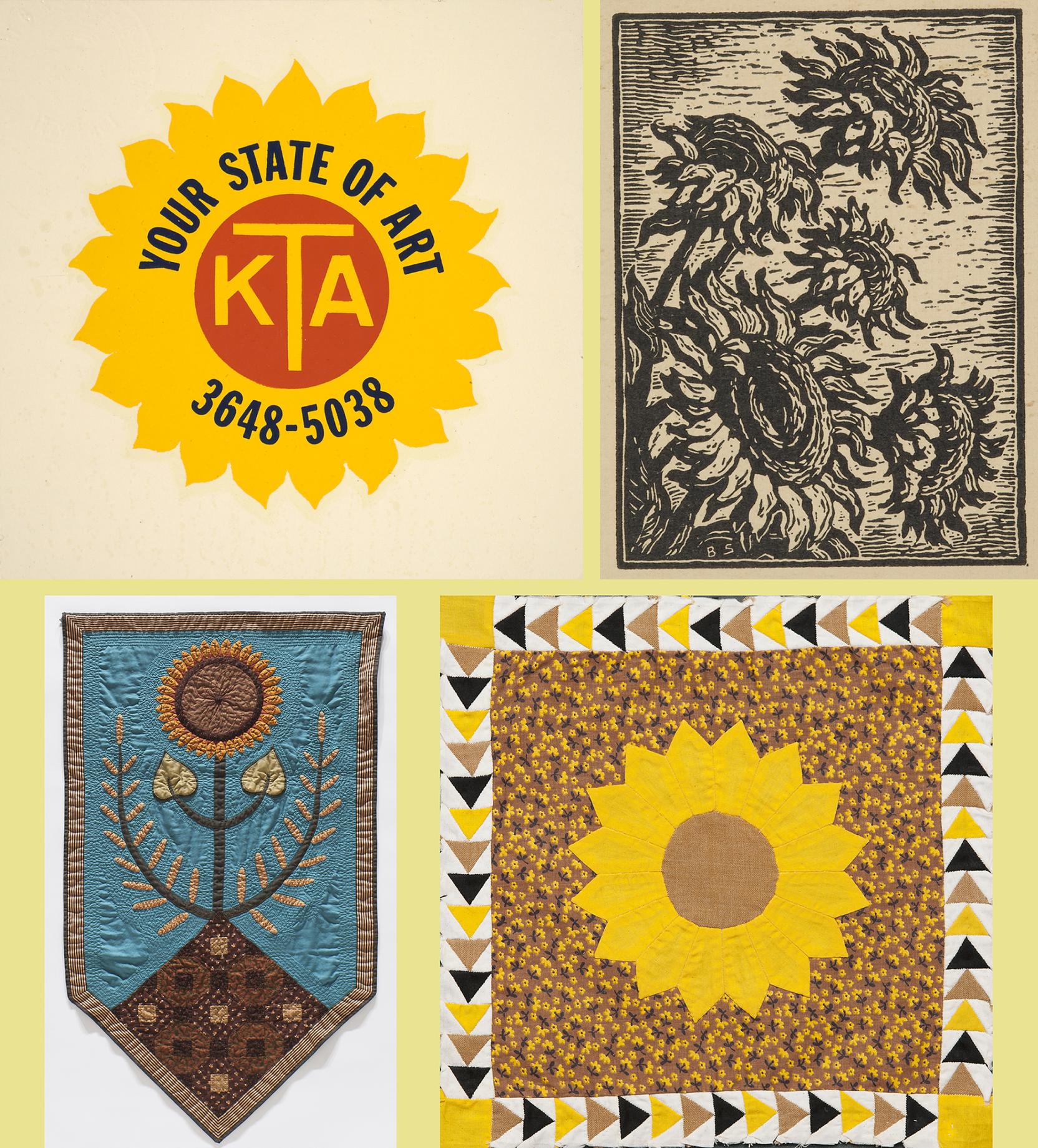
Kansas State Flower: Sunflower
Native to North America, the wild sunflower was designated as the official flower of the state of Kansas in 1903. Thriving in the region, the yellow flower has inspired countless visual representations by local artists. KU Professor Emeritus Roger Shimomura reinterpreted the Kansas Turnpike Authority sunflower road sign into a pop art icon, with KTA now standing for the Kansas Teachers Association. Birger Sandzén, known for his vivid depiction of the Kansas landscape, created a dynamic print of sunflowers, capturing their natural energy. Virginia Jean Cox Mitchell adopted the sunflower motif in her hand-sewn textiles, including a banner that also incorporates an element of wheat—another symbol of the state. Together, these works reveal how the sunflower endures as a vibrant symbol of Kansas continually reimagined through the lens of local creativity.
Your State of Art, Roger Shimomura
Sunflowers, Birger Sandzén
Kansas Quilt Symposium banner, Virginia Jean Cox Mitchell
The Landon Sunflower quilt block, Virginia Jean Cox Mitchell
Sunstruck
From sunlit to sunburnt, this section examines the advantages and consequences of pursuing the sun. Here, artists explore various implications of such quests, often closely tied to ambition or recklessness, ranging from being captivated by the sun to being harmed by it. Depicting subjects who are physically or poetically sunstruck, these works prompt us to reorient our relationship with the sun.
2001.0082
Chasing the Sun, Zhao Yannian
2001.0082 label
Zhao Yannian, a leading figure of the Chinese modern woodblock print movement in the 20th century, carved his own blocks and developed a style marked by bold black-and-white contrast and sensational qualities. Based on the Chinese myth of “Kua Fu Chasing the Sun,” this print depicts a man as he is forced back by the sun’s overpowering radiance. In the myth, a giant named Kua Fu chases the sun tirelessly but fails to capture it and ultimately dies of dehydration.
0000.1706.076
Plate 75: Daedalus et Icarus (Daedalus and Icarus), Johann Wilhelm Baur
0000.1706.076 label
Pursuing the sun can be symbolic of ambition and ego. The story of Icarus is an enduring example of this chase as an act of hubris. In Ovid’s Metamorphoses, Icarus’s father builds him a pair of wings and warns him to fly neither too close to the ground nor to the sun. Icarus ignores his father’s warnings and soars toward the sun, only to have his wings melt away. This work from Johann Wilhelm Baur captures the moment when Icarus is plummeting from the sky, surrounded by the feathers of his former wings.
2002.0013.22
Light Hunter, Maria Arango
2002.0013.22 label
Cuban-born artist Maria Arango uses traditional woodcut block printing methods to create modern prints. In this piece, Arango depicts a muscled, nude figure drawing their bow and aiming at the beaming sun above them. The figure seems to have already shot an arrow that punctured the sun, as light rains down upon them. This woodcut explores the potential consequences of taking the pursuit of power too far by depicting the dangerous and violent act of puncturing the sun.
2016.0034
Green Lion Eats the Sun, Alexis Gideon
2016.0034 label
The esoteric imagery of a green lion devouring the sun is a prominent motif found in alchemical texts and illustrations, such as the Rosarium Philosophorum (1550). In alchemy, the green lion typically represents sulfuric acids such as mercury and vitriol—potent substances capable of dissolving raw materials—while the sun symbolizes gold. Together, they allude to the process of dissolution and purification. These material transformations are often associated with psychological processes, with the lion signifying instinctive desires that seek to consume the sun, which embodies reason and the ego.
Explore more
2004.0060
untitled, Gertraud Brausewetter Reinberger
2004.0060 label
Gertraud Brausewetter Reinberger was 16 when she created this woodcut of a blindfolded woman walking on fire toward the sun. The artist often depicted religious motifs and was especially influenced by anthroposophy, a movement that encourages followers to connect with the spiritual world. Although the subject of this print may appear to be blindly marching into fiery danger, the sun may also represent the light of spiritual knowledge, which transcends the sensations of the physical world.
1971.0130
The Black Sun, Tungsten Hills, Owens Valley, CA, Ansel Adams
1971.0130 label
Ansel Adams made this photograph of a California landscape using solarization, a tone reversal process that occurs when overexposing film to the sun. After excessive contact with light, chemicals on the film’s surface degraded, causing the brightest point—the sun’s center—to appear black. Adams preferred to visualize an image in his mind before creating it and, in this photograph, he used the sun’s destructive capabilities as a technique for portraying the duality of light and darkness.
1971.0130 quote
"The implication in this photograph is that wherever there is significant shadow value there is light—otherwise we have nothingness."
Ansel Adams
Ansel Adams: Technique & Working Methods
Watch Ansel Adams describe his approach to photography.
Sunflower Politics
Across time and place, the image of the sun has been employed to serve varying political purposes. There are cases where the sun stands for political power and imperialist expansion, and there are cases where it stands for collective resistance and perseverance against social injustice. This section considers what images of the sun and sunflowers reveal about the interrelation between humans and authority, nature, and celestial power.
2014.0457
Sun Mad, Ester Hernandez
2014.0457 label
In this print, Chicana artist Ester Hernandez parodies the iconic Sun Maid Raisins logo, replacing the smiling young woman with a skeleton. Drawing attention to the pesticides used to grow “natural” food, Hernandez sought to intervene on behalf of both the farmworkers and consumers who were exposed to contaminants. Hernandez returned to the Sun Maid Raisin motif in 2021 with a sequel work titled Sun Raid. In this updated work, she shifted her focus to the broader exploitation of migrant farmworkers, especially the ways in which the United States relies on cheap labor (under fear of deportation) to obtain fresh food.
1928.0010
gunsen (war fan), unknown maker from Japan
1928.0010 label
Originally used by samurai, this gunsen, or war fan, is constructed out of lacquered paper painted with gold and fixed to iron ribs. Military leaders utilized their fans to send visible signals and commands, while soldiers would use them to fan themselves. An evolving symbol of Japanese identity, the sun represents spiritual and cultural heritage in Japan. In this fan, the sun motif may hold a double meaning as both a symbol of the political power of Japan and as directions for use of the fan itself: to cool off from the hot sun.
1993.0290
More Wholesome, Lynn Basa
1993.0290 label
In More Wholesome, the sunflower is combined with symbols of Americana, such as a white picket fence. Lynn Basa first conceived of this work in the 1980s amid calls to abolish or dramatically defund the National Endowment for the Arts over their affiliation with an artwork considered obscene by some viewers. Basa responds to these critiques with a work that critics might consider acceptable and worthy of funding.
2020.0089.20
Sunflower Seeds, Ai Weiwei
2020.0089.20 label
This mask evokes the image of Ai Weiwei’s Sunflower Seeds, a 2010 art installation comprising over 100 million hand-crafted ceramic seeds. Made by skilled artisans in the porcelain capital of Jingdezhen, China, each seed was unique yet indistinguishable within a vast collective landscape. During the Covid-19 pandemic, Ai Weiwei repurposed the image for his MASK series to fundraise for efforts supporting health workers and vulnerable communities. In both artworks, individual craft and mass action converge. The mask, a symbol of public responsibility, becomes a political provocation, showing how solidarity—whether through art or public action—can be simultaneously intimate and monumental.
Explore more
2012.0041.01
Big Mother is Watching, Marx Aviano
2012.0041.01 label
Big Mother is Watching reimagines the sunflower as a symbol of observation. The sunflowers’ dark centers resemble eyes or camera lenses. The title refers to George Orwell’s book 1984, in which the slogan “Big Brother is Watching You” reminds the characters of the government’s constant video and audio surveillance. By presenting the Earth as an entity that monitors our behavior, the print prompts awareness of human action, or inaction, regarding the climate.
Explore more
1961.0006
Sunset on the Plains, Albert Bierstadt
1961.0006 label
Albert Bierstadt is best known for paintings of the Rockies that he made following a series of six trips to the region between 1859 and 1870. This painting provides an atmospheric view of a flatter, pastoral landscape. In the 1800s, thousands of Americans moved west in search of economic opportunity. Works like this presented an idealized view of the American West, a region filled with resources that Americans felt was their destiny to claim and enjoy.
2013.0186
Sunrise, Sunset? (accessory to Rode to Phila.), Virginia Jean Cox Mitchell
2013.0186 label
Virginia Jean Cox Mitchell’s Sunrise, Sunset? draws its central motif directly from the carved sun on the Rising Sun Armchair, the seat used by George Washington during the Constitutional Convention in 1787. Benjamin Franklin is said to have “looked at that [sun] behind the President without being able to tell whether it was rising or setting.” Although the Founding Fathers ultimately decided it was a rising sun—a symbol of their burgeoning democracy—Mitchell reframes the image as a question. Her textile holds space for both light and darkness, reflecting the sun’s full spectrum of meaning: life and rebirth, aspiration and uncertainty, and hope for a brighter day.
